We are looking for photos. If you want your photos displayed mail or e-mail them and we will give you credit for the photos.
This species has been placed on the Convention for Threatened and Endangered Species (CITES) list.
Aphonopelma Hentzi
FEMALE
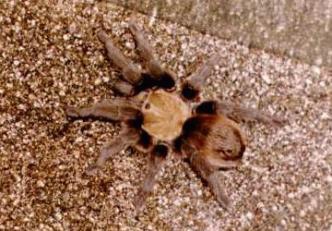
Aphonopelma Hentzi

MALE
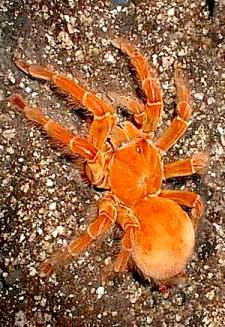
Goliath Bird Eater
Theraphosa Blondi
Megaphobema Robustum

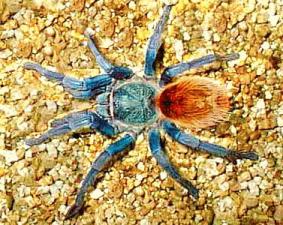
Venezulan Greenbottle Blue
Chromatopelma Cyneopubescens
Grammostola Spatulata
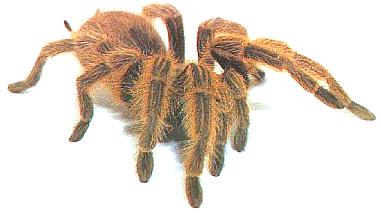

Phampobeteus platyomma Name courtesy Markus Braun, Germany
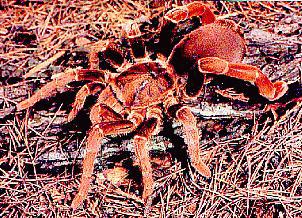
Cithanischius Crawshayi
King Baboon
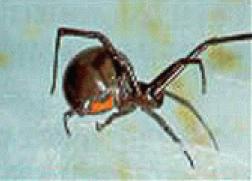
Southern Black Widow
Latrodectus Mactans
Adult black widow spiders have shiny, jet black, rounded, globular abdomens with two reddish or yellowish triangles on the underside which form a characteristic hourglass marking. Adult female northern widow spiders are shiny black or brown-black with two reddish triangles on the underside, resembling a split hourglass. These spiders are about 1/2-inch long, not including the legs (about 1-1/2 inches when legs are spread). Adult males are harmless, about half the female's size, with smaller bodies, longer legs and usually have yellow and red bands and spots over the back as do the immature stages. Newly hatched spiderlings are predominately white or yellowish-white, gradually acquiring more black and varying amounts of red and white with each molt. Juveniles of both sexes resemble the male and are harmless. The venom of the black widow spider is 15 times as toxic as the venom of the prairie rattlesnake. However, only a minute amount of the toxin is injected with a single bite by the spider, while the relatively large amount of injected rattlesnake venom results in about 15 to 25 percent mortality among those bitten.
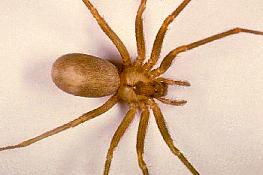
Brown Recluse
Adult brown recluse spiders are soft-bodied, yellowish-tan to dark brown, about 1/4 to 1/2 inch long and have long, delicate grayish to dark brown legs covered with short, dark hairs. The leg span is about the size of a half dollar. Distinguishing characteristics are the presence of three pairs of eyes arranged in a semicircle on the forepart of the head and a violin-shaped, dark marking immediately behind the semicircle of eyes with the neck of the violin pointing towards the bulbous abdomen.
The eight legs and violin marking appear on the flattened-like cephalothorax (combined area of the head and thorax). Both the male and female brown recluse spiders are similar in appearance and equally toxic. The immature stages closely resemble the adults except for size and a slightly lighter color.
These spiders spin small, loose, white to off-white webs with irregular strands. The female lays eggs from May through August in off-white silken cases (sacs) about 1/3-inch in diameter. Sacs containing 40 or more eggs each are found hung in the web, overwinter in sheltered, dark areas and are guarded by the female until her death. Each female may lay as many as 300 eggs during her lifetime. Spiderlings emerge in 24 to 36 days leaving the egg case with slow development (10 to 12 months), and are influenced by weather conditions and food availability. Spiders can survive long periods of time without food or water and may live as long as two years.
The severity of a person's reaction to the bite depends on the amount of venom injected and individual sensitivity to it. Bite effects may be nothing at all, immediate or delayed. Some may not be aware of the bite for 2 to 8 hours, whereas others feel a stinging sensation usually followed by intense pain if there is a severe reaction. A small white blister usually rises at the bite site surrounded by a large congested and swollen area. Within 24 to 36 hours, a systemic reaction may occur with the victim characterized by restlessness, fever, chills, nausea, weakness and joint pain. The affected area enlarges, becomes inflamed and the tissue is hard to the touch. The spider's venom contains an enzyme that destroys cell membranes in the wound area with affected tissue gradually sloughing away, exposing underlying tissues. An effective antivenom is not generally available. The physician will usually administer high doses of cortisone-type hormones to combat hemolysis and other systemic complications. A report suggests that treatment with dapsone (a drug used mainly for leprosy) may reduce the degree of tissue damage.